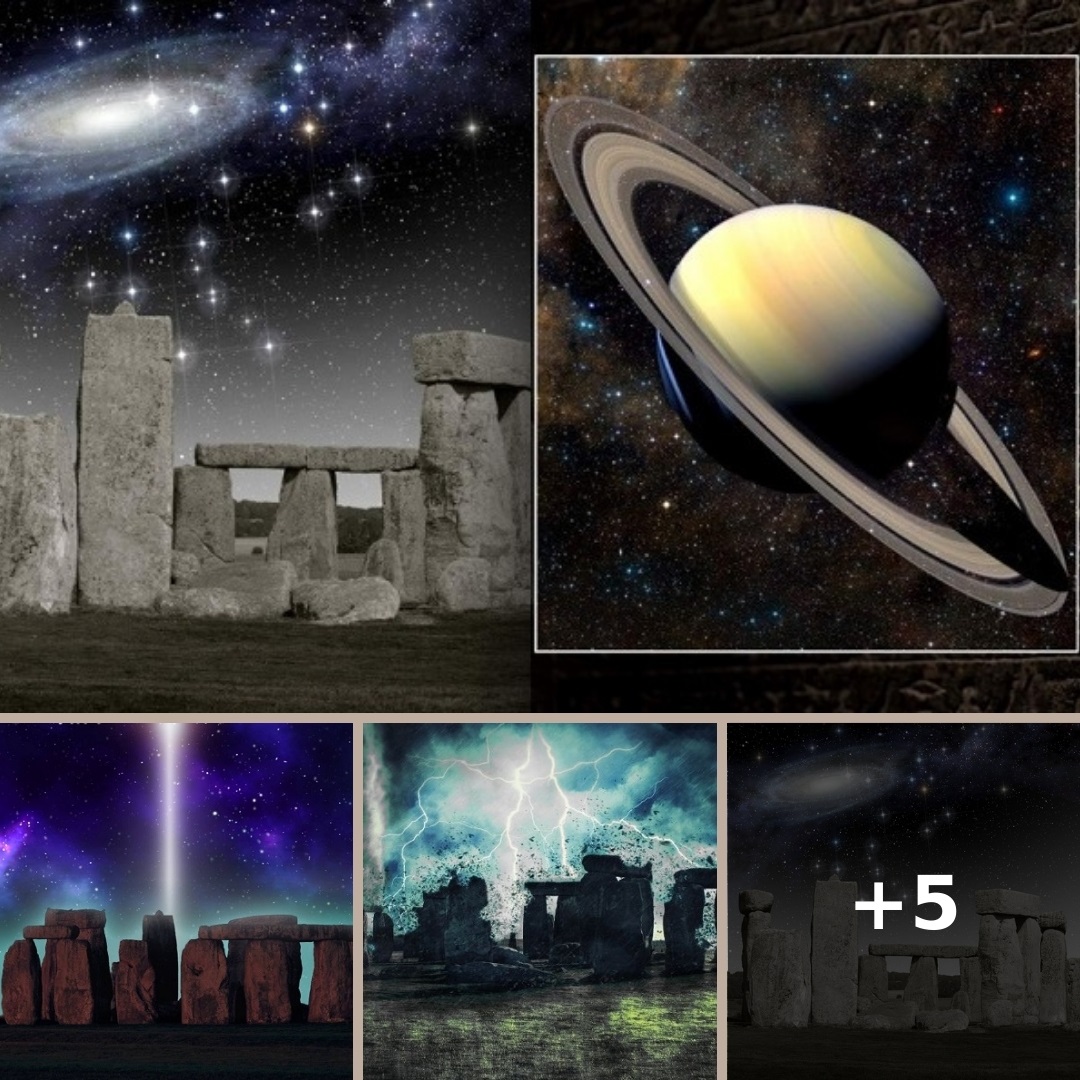The purpose and complexity of Stonehenge continues to baffle researchers. Could it be a sacred cosmic calculator or an ancient portal still active today?
For centuries, historians and archaeologists have puzzled over the many mysteries of Stonehenge, the prehistoric monument that took Neolithic builders an estimated 1,500 years to erect. Located in southern England, it is comprised of roughly 100 massive upright stones placed in a circular layout.
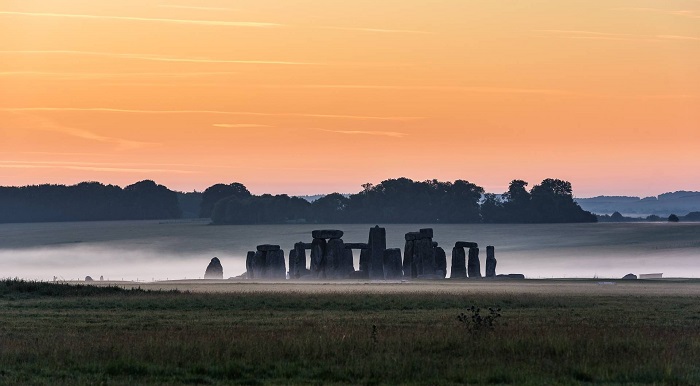
Stonehenge in mist, at Sunrise. The ancient stone monument is located at Salisbury, Wiltshire, England, UK. © Image Credit: Andrei Botnari | Licensed from DreamsTime.com (Editorial/Commercial Use Stock Photo)
While many modern scholars now agree that Stonehenge was once a burial ground, they have yet to determine what other purposes it served and how a civilization without modern technology—or even the wheel—produced the mighty monument. Its construction is all the more baffling because, while the sandstone slabs of its outer ring hail from local quarries, scientists have traced the bluestones that make up its inner ring all the way to the Preseli Hills in Wales, some 200 miles from where Stonehenge sits on Salisbury Plain.
The mysterious events at the Stonehenge site
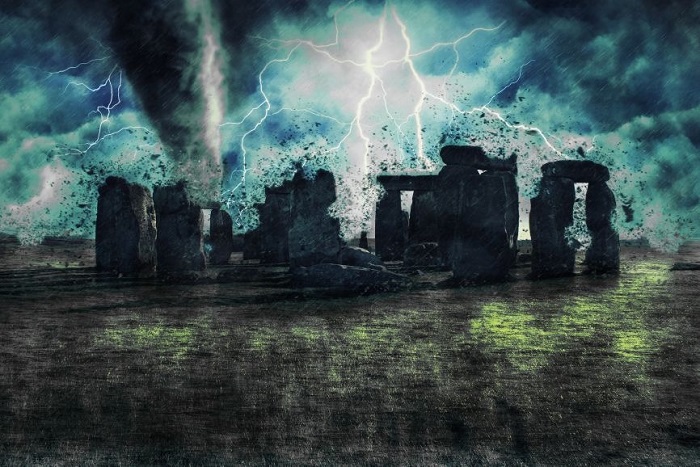
Illustration of the Stonehenge in a stormy night. © Image Credit: Batuhan Toker | Licensed from DreamsTime.com (Editorial/Commercial Use Photos, ID:135559822)
In 2015, paranormal expert Mike Hallowell was called in to reinvestigate a bizarre missing person’s case that was originally reported by a police officer in August 1971. The report stated that late one summer evening, five teenagers converged on the ancient ruins of Stonehenge to tap into the vibrations. After setting up camp within the stone circle and starting a small celebration of sorts, a flash of lightning lit up the sky, a violent storm quickly followed. The teenagers carried on but as more lightning bolts struck trees and then the huge stones themselves they ran to their tents for cover. Things then took a dark turn.
A local policeman on patrol reported that the stone circle was surrounded by an eerie blue light, the ruin quickly became so bright he had to shield his gaze. Moments later he heard blood-curdling screams coming from the middle of the circle and then nothing, the teenagers disappeared. If this police officer’s report can be believed, is it enough evidence to convince skeptics that there are more to the supernatural stories surrounding Stonehenge than mere folklore?
Researcher Billy Carson talks about another witness who saw this shocking calamity:
“Afarmer that owned the land where Stonehenge is located was upset because a group of hippies was camping inside the Stonehenge. He called the police. He and the policemen started walking toward Stonehenge and as they did this they saw lightning strike the stones. But instead of it just sorting out the stones, this very strange thing happened where a glow starts to form inside the Stonehenge, and very quickly the glow went from a kind of bluish to a bright white. It was so bright that the ball of energy literally reached the edge of the outer ring of the stones. The farmer and the policemen start to run towards this because there was this flash and then the light vanished. This was eyewitness testimony and is now indisputable. Eyewitness testimony is proved in a court of law, and whoever was there had gotten completely portaled out.”
Could deciphering the mysteries of Stonehenge lead us to understand the secret technologies of the ancients?
The connections between the Ley lines and the Stonehenge and the Caduceus symbol
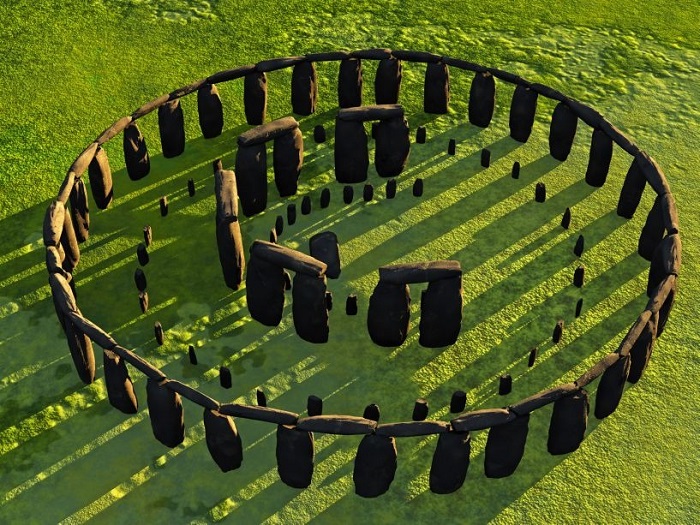
Digital rendering of an overhead view of Stonehenge. © Image Credit: George Bailey | Licensed from DreamsTime.com (Editorial/Commercial Use Stock Photo, ID:16927974)
We think generally, the Ley lines are a straight line that runs through the ground and some Leys are astronomical and they point to an astronomical event like the rise of the midsummer sunrise, for example, or set in moon phase that’s a celestial orientated lane. Then you have other Ley lines that are just topographical and they don’t have any energy and they just link sight after sight across the ancient landscapes. So we need to think of Ley lines as being different categories. Distinctly, some have energy, some don’t. Then we can come across what’s called a Ley system. And a Ley line system is a straight line in the landscape that has meandering currents in twine in it.
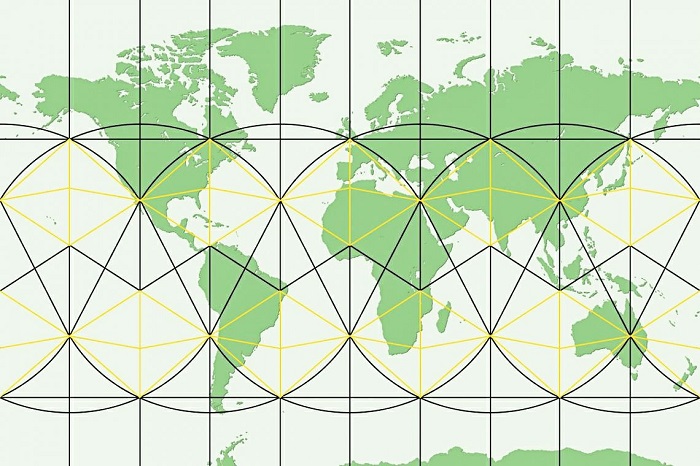
Ley lines refer to straight alignments drawn between various historic structures and prominent landmarks. The idea was developed in early 20th-century Europe, with ley line believers arguing that these alignments were recognized by ancient societies that deliberately erected structures along with them. Since the 1960s, members of the Earth Mysteries movement and other esoteric traditions have commonly believed that such ley lines demarcate “earth energies” and serve as guides for alien spacecraft. © Image Credit: LiveTray.com
So let’s imagine for one moment the Caduceus symbol that paramedics wear still today. It contains a straight line with two serpents in twine in it, one is male and one is female. And when we look at the ancient landscape that’s what’s going on, you have a straight Ley line and Ley systems have a meandering male current and female current entwined in it. Now these Leys, once you project them around the globe, become a great circle. And the ancient Celtic druids who inherited the information of the bronze age always said in their literature, there are 12 mighty circles that go around the globe, and one of these mighty circles that goes around the globe is exactly a 51 degrees latitude.
Stonehenge is situated precisely at 51 degrees 11 minutes north, and that’s where the only place on the British Isles where an accurate orientation on winter solstice sunset yields, in the reverse direction, an approximate orientation on summer solstice sunrise. In addition, at mid-summer, the sun sets at an angle to the moon setting at its northerly phase, creating a right angle. So Stonehenge was on that latitude of 51 degrees, the Ley flows through that at 51 degrees, the Heel Stone is sighted at 51 degrees of latitude. Now, this Ley then links in not just to that latitude but to where the planets were positioned in the sky around about 2700 BC.

The Heel Stone: It’s a single large block of sarsen stone standing within the Avenue outside the entrance of the Stonehenge earthwork in Wiltshire, England. © DreamsTime.com
Astronomers agree that in the year 2700 BC, the planets and stars would have aligned perfectly to reflect the stone placements at Stonehenge. When we study the celestial records of the ancient world, it becomes obvious that the people of Stonehenge were calculating the distances between sacred energy sites and planets then recreating these dimensions by setting stones in the ground on earth. But to what end? What was the relationship between these gargantuan stones and the planets above them?
Stonehenge’s secret connections

Stonehenge’s strange connection. © Image Credit: Savatodorov | Licensed from DreamsTime.com (Editorial/Commercial Use Stock Photo, ID:106269633)
There is a theory that, in addition to the influence of the sun and the moon and the power of the eclipse, Stonehenge has a connection with the influence of Saturn. This comes from a theory that was proposed in the 1980s originally. The theory explains the inner so-called horseshoe of stones that are made of bluestone―which comes from Wales, which is hundreds of miles away from Stonehenge―itself reflected this influence; and that because they were directional, they sort of pointed towards the influence of Saturn.
Now, if we visualize this on the ground, we need to see that Stonehenge represents Saturn and it has 30 lintels going around it and Saturn takes exactly 30 years to make one round of the zodiac, which any astronomer and an astrologer will tell you―that’s called a Satin return. It’s a 30-year-cycle that’s why there were 30 lintels at Stonehenge.
According to theorists, our ancient ancestors did everything for a meaning, nothing was by chance. Everything had a metaphysical and physical property in the ancient world of Stonehenge. We need to now imagine along that line going further along with it that there was another ancient site called Marden.
Marden was a super henge. ‘Den’ is an old English word for settlement and ‘Mars’ means modern―the settlement of mars, and that’s where mars was situated in the ancient landscape and brought down to earth they were bringing heaven to earth. Moving further up the Ley you have the sun and the moon represented by Avebury Henge, which contains the largest stone circle in the world.
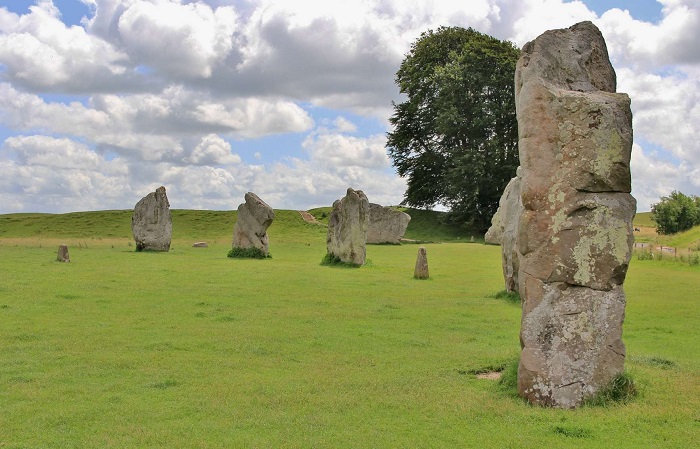
The vast 330m (1,082ft) wide stone circle of Avebury was built between about 2850 BC and 2200 BC. Containing three stone circles and boasting 100 huge standing stones originally, it has been the subject of considerable archaeological interest since the 17th century. © Image Credit: Cindy Eccles | Licensed from DreamsTime.com (Editorial/Commercial Use Stock Image, ID:26727242)
Did our ancient ancestors open the door to a hidden super-power?
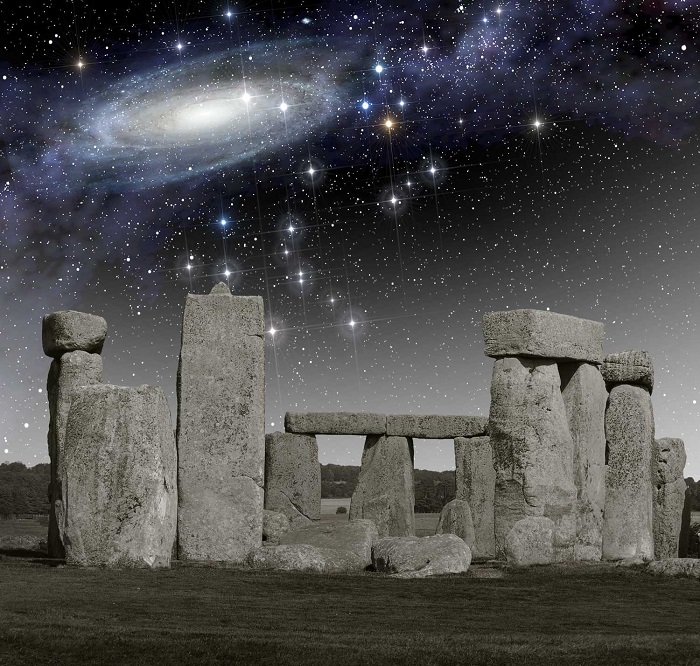
© Image Credit: Claudio Balducelli | Licensed from DreamsTime.com (Editorial/Commercial Use Stock Photo, ID:34921595)
As Stonehenge slowly falls into ruin, scientists are digging deeper for answers about the true purpose of these stone megaliths. The site was comprised of an inner circle of smaller blue stones set in a horseshoe arrangement surrounded by a larger external wall of 60-million-year old silicified sarsen sandstones. 100 remain standing today but originally it is believed there were many more.
The mass of the largest is comparable to the weight of a fully-loaded cement truck. It all began with the u-shaped construction on the inside. A lot of people believe that the u-shaped construction literally has to do as symbolic of the female human womb and that’s why it’s open on one end to be able to give birth outwards up to the energy. These weren’t people that had any access to any sort of technology we have today and yet they were probably accomplishing things with this science that we could only dream about today just using stones. That’s fascinating.
More astounding than the size of these megaliths is that the properties in sarsen are comparable to the rock crystal quartz. Did the ancients find a way to regulate sound and energy frequencies? And if so, what were they using these frequencies for?
Stonehenge and the energy of high-speed particles
Theorists suggest that when we see the stones being rooted into the energy system and be able to produce aerial energy in a band form that communicates from one stone to the next in cross-talk communication (as it’s called), we can compare that to a large energy system.
Stonehenge is unique, there isn’t another stone circle like it in the British isles, which has lintels on the top precisely. It has a circle of perfect 360 degrees circle on the top created by the lentils which, according to many researchers and geomancers, makes a form of energy going round and round through the monuments and then every kind of third or fourth circuit.
The energy spins off towards the Heel Stone, it will always have what’s called an exit gate that’s a standing stone that’s slightly off to one side where the energy is guided to go that could be likened to something like the test project conducted by The European Organization for Nuclear Research, known as CERN. Because that too is a circular monument that generates high particle speed of energy going round and round.
Could the ancients have technology that was infinitely as powerful as CERN founded in 1954? The CERN laboratory sits astride the franco-swiss border near Geneva. Here the top nuclear research physicists on earth engineer complex scientific instruments that analyze the core constituents of matter. No one would argue that their most powerful creation to date is the Large Hadron Collider (LHC)―a 27-kilometer ring of superconducting magnets that significantly boost the energy of particles accelerating through it.
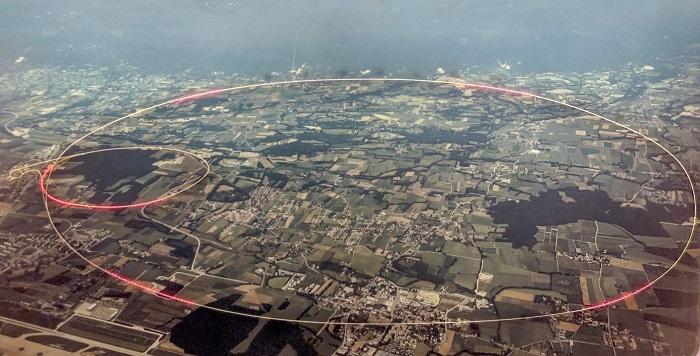
Components of the CERN particle accelerator, known as The Large Hadron Collider (LHC), is located underground in Geneva, Switzerland, September 2014. The Large Hadron Collider is the world’s largest and most powerful particle accelerator. It consists of a 27-kilometer ring of superconducting magnets with a number of accelerating structures to boost the energy of the particles along the way. © Image Credit: Grantotufo | Licensed from DreamsTime.com (Editorial/Commercial Use Stock Photo, ID:208492707)
When a stone circle has that circular shape it generates a force field going round and round and round. So could our ancient ancestors have been creating this type of energy field?
A few years ago, when an engineer from the CERN’s LHC project came to experience and examine the ancient site of Stonehenge independently, he found that an unusually high particle speed of energy going through the land, which similarly could be acquired from the hadron collider of modern days.
According to many independent researchers, monuments like Stonehenge, which are available all around the world in various energy-based geo-locations, could make a particle literally go through the earth at high speed. On a linear line, it is a lane of conducting super energy. If this is the case, what our ancient ancestors were doing was they were pushing energy along straight lines or from a circle (like the hadron collider), which is actually a particle accelerator that shoots atoms around in such an accelerated degree that they can literally split them down into their constituent parts.
With Stonehenge, what you might be seeing is an ancient attempt at something like that. However, perhaps they weren’t trying to break atoms down per se, but with both, they might be able to open a doorway into another dimension.
There are many people who believe that the hadron collider was actually invented to do just that, and that the rest of the story is just made up to make it look like it’s an actual valid scientific endeavor. It could be that the deep state who constructed it are looking to open up a doorway to the inner so-called horseshoe. Because they were directional, they sort of pointed towards the influence of Saturn, not necessarily where it rose but perhaps towards another monument on the horizon. But because of this, it gave Stonehenge a quite dark aspect because Saturn is associated with the color black with death or mortality.
Could Stonehenge be under the influence of Saturn?
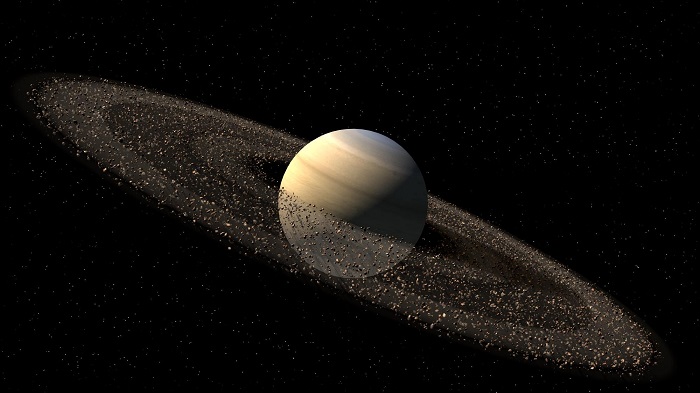
Illustration of planet Saturn with asteroid rings. © Image Credit: 3000ad | Licensed from DreamsTime.com (Editorial/Commercial Use Stock Photo, ID:32463084)
Saturn is a fascinating planet because in Greek mythology it was Cronus who was actually the Titan, the ruler of all the gods. And Zeus, Jupiter had to overthrow Saturn in order to survive because Cronus was swallowing his own children and there’s something to be said for this relationship of Saturn to satan (devil).
Though we find this theory a little odd but the Saturn’s association with ‘time’ is very important because these stone circles often seem to reflect the idea of the passage of time. The ‘time’ itself is the oldest devil in this universe. What do we know as humans the one thing we all run up against that we cannot defeat is ‘time’ so Saturn as this sort of ring lord is actually ‘lord of the rings’―the rings that influence time in itself.
In all the forms of ancient mythology, even in Hindu and Sumerian texts, Saturn is always considered a very destructive planet. And it’s difficult to understand exactly why each planet has a certain resonance and similarities through mythologies around the world, though they were independently created from entirely different cultures. Mars for war, Pluto is sort of the outlier, Venus is for love, but Saturn has been this sort of monster in mythological history. These ideas have challenged some to look at Stonehenge differently than they had before.
What does the placement of the stones aligning with Saturn have to do with our space-time reality? Is it possible that Stonehenge with its placement of stones to represent Saturn, the moon and the sun is actually telling modern-day humans to remember who we are, and where we come from?
